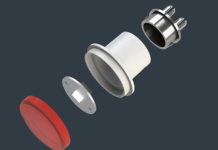 As highlighted by Zvei, the current semiconductor supply shortages are affecting numerous European companies across all industries. A new semiconductor strategy paper by Zvei and a member of DigitalEurope (the trade association representing digitally transforming industries in Europe) shows that policy action must now focus on securing supply for all different sizes of microchips to support key sectors of the economy like manufacturing, consumer electronics and healthcare. Besides public funding, Europe also needs a favourable business environment to build a thriving microelectronics ecosystem. Building upon the ZVEI study, DigitalEurope has laid out several recommendations:
As highlighted by Zvei, the current semiconductor supply shortages are affecting numerous European companies across all industries. A new semiconductor strategy paper by Zvei and a member of DigitalEurope (the trade association representing digitally transforming industries in Europe) shows that policy action must now focus on securing supply for all different sizes of microchips to support key sectors of the economy like manufacturing, consumer electronics and healthcare. Besides public funding, Europe also needs a favourable business environment to build a thriving microelectronics ecosystem. Building upon the ZVEI study, DigitalEurope has laid out several recommendations:
-The EU should expand production capacity after careful analysis driven by market demand, not just political imperatives.
-Industry needs both chips of larger structure sizes as well smaller ones. This will also be the case decades from now. “Leading edge innovation ” or “beyond state-of-the-art innovation” is not only about structure-size. It can also refer to new production processes, materials, equipment, or other innovations along the whole value chain.
-The EU is way behind on public funding, but this is just one aspect. The announced EU Chips Act must also include creating a more favourable environment for investments, like tax incentives, construction permits and boosting skills.
-The new European Semiconductor Alliance is the most promising group to work on this. It must bring together designers, producers and users of chips, together with industry stakeholders and EU Member states, to align on clear KPIs and a clear timeline.
-The semiconductor market is by nature global and will remain so. We must use fora like the EU-US Trade and Technology Council to improve global supply chains.
Zvei also published some background data: the European Commission recently announced an European Chips Act and Commissioner Thierry Breton declared the EU’s ambition in increasing capacity of semiconductors in the range of 5 nanometers (nm) and below. This strategy is aimed at tackling a decline in Europe’s share of global semiconductor production from 22 % in 1998 to 8 % today, while other regions in the world have gradually introduced a more favourable business climate. The sum of EU governments’ semiconductor incentives foreseen from 2020 to 2030 is just a tiny fraction of what respectively China and the US have promised over the same time.



